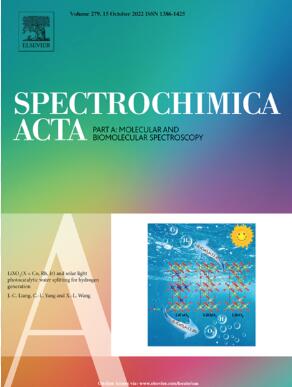Unveiling the potential of Brachiaria ruziziensis: Comparative analysis of multivariate and machine learning models for biomass and NPK prediction using Vis-NIR-SWIR spectroscopy
IF 4.3
2区 化学
Q1 SPECTROSCOPY
Spectrochimica Acta Part A: Molecular and Biomolecular Spectroscopy
Pub Date : 2025-02-18
DOI:10.1016/j.saa.2025.125930
引用次数: 0
Abstract
This study investigated the development and validation of predictive models for estimating foliar nitrogen (N), phosphorus (P), and potassium (K) contents, along with shoot dry mass (SDM) of Brachiaria ruziziensis L. The approach utilized Vis-NIR-SWIR spectroscopy coupled with multivariate statistical techniques (PLS, PCR) and machine learning algorithms (SVM, RF). A triple-factorial, completely randomized design with ten replications per treatment was employed in a greenhouse setting. Treatments included type of input (limestone-mining coproducts), input particle size (filler and powder), and soil class (Arenosol and Ferralsol). Following input incubation, B. ruziziensis was sown. Forty days later, foliar spectra and leaves were collected. Chemical analysis determined NPK content, along with SDM. The study developed predictive models utilizing Vis-NIR-SWIR spectroscopy, Partial Least Squares (PLS), and machine learning algorithms like Support Vector Machine (SVM) and Random Forest (RF) to estimate foliar N, P, K, and biomass. Model adjustments achieved R2p > 0.70 and RPDp > 1.80 for PLS, SVM, and RF models across all variables (SDM, N, P, and K). These results highlight the effectiveness of specific spectral bands for nutrient and biomass discrimination and emphasize the potential of these techniques for rapid, non-destructive nutrient content estimation. The findings support the integration of advanced spectroscopic methods with machine learning algorithms for improved precision agriculture practices, providing a more sustainable alternative for nutrient and biomass analysis in forage crops. This approach optimizes forage production and minimizes atmospheric CO2 emissions.

求助全文
约1分钟内获得全文
求助全文
来源期刊
CiteScore
8.40
自引率
11.40%
发文量
1364
审稿时长
40 days
期刊介绍:
Spectrochimica Acta, Part A: Molecular and Biomolecular Spectroscopy (SAA) is an interdisciplinary journal which spans from basic to applied aspects of optical spectroscopy in chemistry, medicine, biology, and materials science.
The journal publishes original scientific papers that feature high-quality spectroscopic data and analysis. From the broad range of optical spectroscopies, the emphasis is on electronic, vibrational or rotational spectra of molecules, rather than on spectroscopy based on magnetic moments.
Criteria for publication in SAA are novelty, uniqueness, and outstanding quality. Routine applications of spectroscopic techniques and computational methods are not appropriate.
Topics of particular interest of Spectrochimica Acta Part A include, but are not limited to:
Spectroscopy and dynamics of bioanalytical, biomedical, environmental, and atmospheric sciences,
Novel experimental techniques or instrumentation for molecular spectroscopy,
Novel theoretical and computational methods,
Novel applications in photochemistry and photobiology,
Novel interpretational approaches as well as advances in data analysis based on electronic or vibrational spectroscopy.

 求助内容:
求助内容: 应助结果提醒方式:
应助结果提醒方式:


